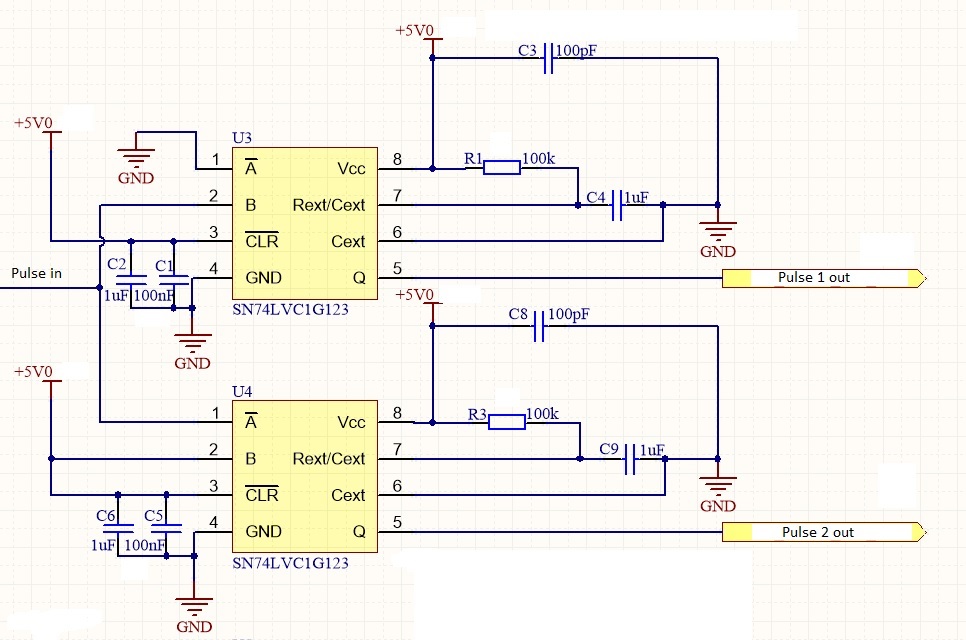Other Parts Discussed in Thread: CD74HC4538, CD74HCT4538, CD54HC4538, CD54HCT4538
Good day
I am currently fault finding an edge detector circuit. It is installed on a site that is experiencing frequent power failures. Unfortunately, the power failures are out of our control. The result for us is that sometimes the below circuit gets "stuck".
What I mean by this is that the relay which is triggered by this circuit fails to trigger. Once the failure mode is created, then there is no reliable way to get the circuit to operate normally. Power cycling does not clear the fault.
I managed to create the fault once in the workshop with the following:
- The fault seemed to occur after a power fault in our building/lab (coincidentally).
- The 5V is supplied by a bench power supply.
- The "pulse in" goes high for one second then low for one second.
- The "Pulse 1 out" switches a relay on, "Pulse 2 out" switches the relay off.
- During the failure I managed to measure the following:
- Pulse 2 out stuck at 5 VDC
- 2.3 VDC measured across C9.
- Pulse 1 out triggering as normal.
- 5 VDC measured across C4.
- Power was removed
- The circuit was left powered down overnight.
- In the morning, I connected power and measured the same failure.
- The fault resolved itself after I was in a meeting for an hour. I unfortunately did not leave the circuit powered.
- The fault has not since returned.
My question is: Is there any improvement I can make to this circuit to make it resistant to this type of failure?
Also, is there a device more suited to this application that is less susceptible to start up and switch off transients?
Any suggestions are appreciated.


